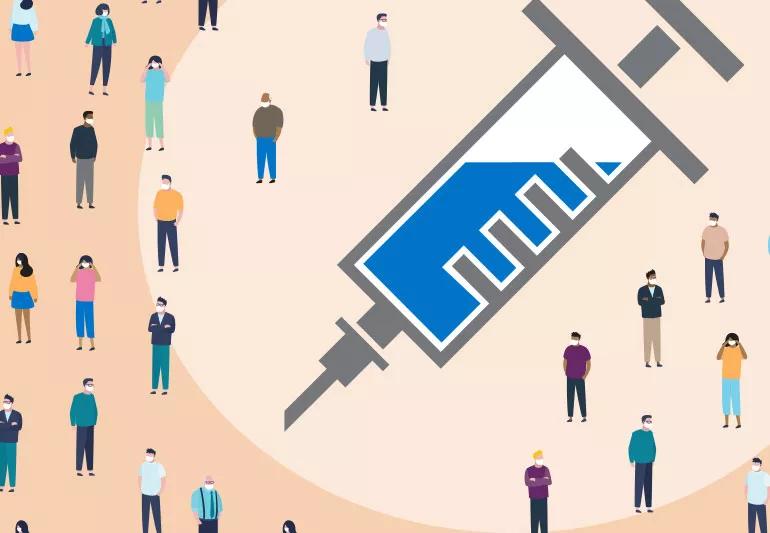The short answer from an immunity and pulmonary medicine physician

A: A vaccinated person acts as a barrier to slow and prevent the virus from continuing to spread. The ultimate end goal is to get as many people vaccinated as possible so that more people are protected. The entire population benefits from a high vaccination coverage, especially those who are most at risk and vulnerable.
Advertisement
Cleveland Clinic is a non-profit academic medical center. Advertising on our site helps support our mission. We do not endorse non-Cleveland Clinic products or services. Policy
Once a population reaches a point of collective immunity where the disease is no longer likely to spread, it reaches the herd immunity threshold. The estimate for COVID-19 is that roughly 70% to 85% of the population will need to be vaccinated to reach the herd immunity threshold, although this will likely be a moving target as we move into different stages of the pandemic. (In contrast, the flu needs between 33% and 44% vaccinated to reach the herd immunity threshold.)
It’s a safer place to live when you have a high vaccination rate and we hope that everyone will take the vaccine when they’re eligible to receive it.
– Serpil Erzurum, MD, Chair of the Lerner Research Institute.
Advertisement
Learn more about our editorial process.
Advertisement

The short answer: It’s complicated, but the basic care precautions still prevail, like washing your hands and isolating if you’re sick

They can feel like a typical headache or a migraine headache, but the pain can last for weeks to months

Any large social gathering — from a family birthday party to an indoor music concert — has the potential to spread serious infection

It’s important to connect with a healthcare provider, get quality sleep and balance your activities with your energy levels

Just like the flu, COVID-19 will continue to evolve every year

The duration varies, but symptoms can linger for a few days up to a couple weeks or more

Vaccination is best for prevention, but if you get sick with COVID-19, treatments are available

The virus lives best in humans, but it can last on hard surfaces, like doorknobs and railings

Type 2 diabetes isn’t inevitable with these dietary changes

Applying a hot or cold compress can help with pain